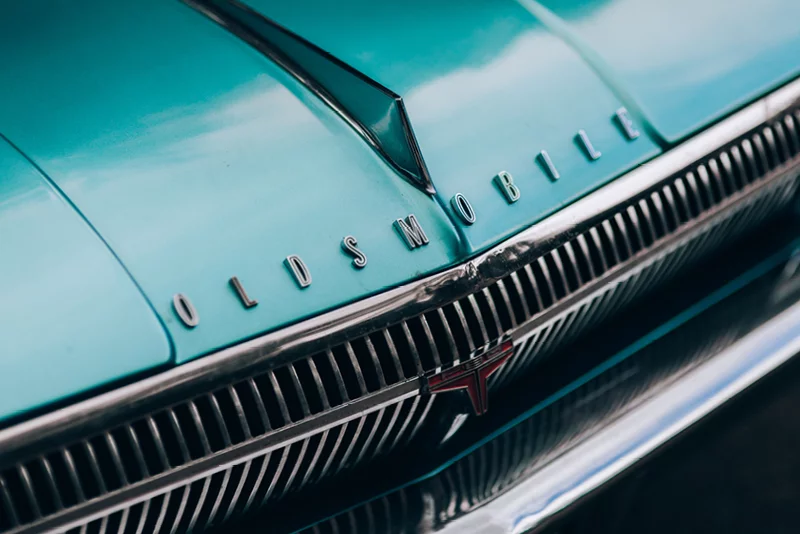Although Oldsmobile is a brand no longer in operation, this doesn’t discount the simple fact that they once produced some of America’s finest motorcars.
During its tenure as a division of General Motors, Oldsmobile slotted into the middle of the operation’s five vehicle divisions – above Chevrolet and Pontiac, but below Buick and Cadillac. Oldsmobile has long been noted for its groundbreaking technology and designs, and was one of America’s oldest automotive production companies prior to it’s shut down in 2004.
The Origins Of Oldsmobile
The youngest son of a blacksmith and a pattern-maker, Ransom Eli Olds was born in Ohio on June 3, 1864. Although Olds claimed to have built his first steam car as early as 1887 and his first gasoline-powered car in 1896, there’s no doubt that one of America’s finest automobile masterminds certainly came from humble beginnings.
As a young man, Olds went to work for his family’s Michigan based machine-repair and engine-building business in 1883. Renowned as a “tinkerer” with a sharp mind, it didn’t take long for Olds to found Old Motor Works in 1896. Armed with the financial backing of lumbering mogul Samuel L. Smith, Olds shifted his new operation to Detroit in 1900 and rebranded the enterprise as Oldsmobile. However, it didn’t take long for disaster to strike, and a fire wiped out all but one of the small, one cylinder curved dash models.
Light, reliable and relatively powerful for it’s time, that very same curved dash “Oldsmobile” became a commercial sensation after appearing at the New York Auto Show in 1901. Olds returned his primary operations to Lansing, Michigan in 1902, and soon got to work on initiating large scale production of the car using the progressive assembly-line system.
Unfortunately, it didn’t take long for Olds, Smith and the board of directors to reach an impasse on the future direction of the company: Olds wished to continue focusing on smaller vehicles, whereas the others favoured the production of larger, more expensive automobiles for a perceived higher profit. Eventually, Olds left in 1904 and went on to found the Reo Motor Car Company, named after his own initials. After the departure of Olds, Oldsmobile began to struggle financially, and became the second brand after Buick to be swallowed up in 1908 by the new industry conglomerate, General Motors.
The move proved to be a fruitful one though, and by the 1920’s, the six and eight cylinder vehicles produced by Oldsmobile sat right in the middle of the General Motors lineup – consumers were loving that they were less expensive options when compared to Buick or Cadillac models, but still sat comfortably ahead of Chevrolet options. Oldsmobile even made it through the Great Depression, and developed a reputation as being GM’s “experimental” division – even introducing the so called “safety automatic transmission” in 1938, a precursor to the 1940’s “Hydra-Matic”, or the world’s first fully automatic transmission in a motor vehicle.
Introduced in the new 88 model of 1949 was the new 135 horsepower “Rocket” engine, which catapulted Oldsmobile to the status of producing one of the world’s top performing cars. Just a few short years later, the company launched the Cutlass and the upscale compact F-85 (powered by a V8 engine). Both would go on to become some of the automotive industry’s most successful names and longest running production lines – so much so, that the Cutlass Supreme would reign as the best-selling American car for much of the 1970’s and early 1980’s.
The End Of The Oldsmobile Era
Unfortunately, nothing lasts forever. By the time the mid 1980’s arrived, Oldsmobile sales began to decline, and a story published by The Washington Post in 1992 indicated that General Motors was seriously considering retiring the Oldsmobile brand. However, both General Motors and Oldsmobile representatives denied the publication’s claims, and went on to celebrate its 100th year anniversary in 1997.
Despite the best efforts of the big wigs at General Motors, sales still continued to slide through the 1990’s. Foreign imports with smaller, more fuel efficient models contributed significantly to the decline, and General Motors finally announced in 2000 that the makes scheduled for release in 2004 would be their last. When the very last Oldsmobile rolled off the assembly line in April 2004, more than 35 million Oldsmobiles had been built during the brand’s lifetime.
Since personal motor vehicles were invented in 1886, the automobile industry has faced different obstacles, from rising fuel costs and changes in consumer spending habits to increased volatility in raw materials pricing. However, this doesn’t discount the achievements, quality and legacy of Oldsmobile, and at the time of it’s retirement, was one of the world’s oldest trading vehicle manufacturers behind Mercedes Benz, Peugeot, Skoda, Tatra and Vauxhall.

